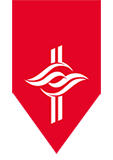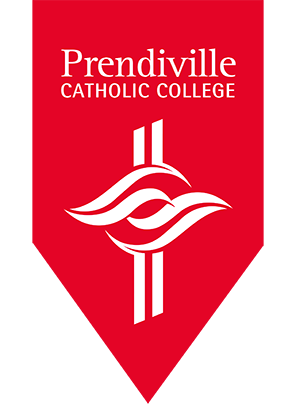English

English
Year 11
From 2021 students in Year 11 are permitted to select both English and Literature should they desire.
Open the panels below for further details.
English (ATAR)
The English ATAR course focuses on developing students’ analytical, creative, and critical thinking and communication skills in all language modes. It encourages students to critically engage with texts from their contemporary world, with texts from the past and with texts from Australian and other cultures. Such engagement helps students develop a sense of themselves, their world and their place in it.
Through close study and wide reading, viewing and listening, students develop the ability to analyse and evaluate the purpose, stylistic qualities and conventions of texts and enjoy creating their own imaginative, interpretive, persuasive and analytical responses. The English ATAR course is designed to develop students’ facility with all types of texts and language modes and to foster an appreciation of the value of English for lifelong learning.
Students refine their skills across all language modes by engaging critically and creatively with texts. They learn to speak and write fluently in a range of contexts and to create a range of text forms. They hone their oral communication skills through discussion, debate and argument, in a range of formal and informal situations.
The Year 11 ATAR syllabus is divided into two units, each of one semester duration, which are typically delivered as a pair.
The English ATAR course focuses on developing students’ analytical, creative, and critical thinking and communication skills in all language modes. It encourages students to critically engage with texts from their contemporary world, with texts from the past and with texts from Australian and other cultures. Such engagement helps students develop a sense of themselves, their world and their place in it.
Unit 1
Students explore how meaning is communicated through the relationships between language, text, purpose, context and audience. This includes how language and texts are shaped by their purpose, the audiences for whom they are intended, and the contexts in which they are created and received. Through responding to and creating texts, students consider how language, structure and conventions operate in a variety of imaginative, interpretive and persuasive texts. Study in this unit focuses on the similarities and differences between texts and how visual elements combine with spoken and written elements to create meaning. Students develop an understanding of stylistic features and apply skills of analysis and creativity. They are able to respond to texts in a variety of ways, creating their own texts, and reflecting on their own learning.
Unit 2
Students analyse the representation of ideas, attitudes and voices in texts to consider how texts represent the world and human experience. Analysis of how language and structural choices shape perspectives in and for a range of contexts is central to this unit. By responding to and creating texts in different modes and media, students consider the interplay of imaginative, interpretive, persuasive and analytical elements in a range of texts and present their own analyses. Students critically examine the effect of stylistic choices and the ways in which these choices position audiences for particular purposes, revealing and/or shaping attitudes, values and perspectives. Through the creation of their own texts, students are encouraged to reflect on their language choices and consider why they have represented ideas in particular ways.
From 2021, students in Year 11 are permitted to select both English and Literature should they desire.
Prerequisite: C grade in Year 10 English. However it is highly recommended students achieve a high C grade.
Pathway: Units 1 and 2 lead to Units 3 and 4 in Year 12.
English (General)
The English General course focuses on consolidating and refining the skills and knowledge needed by students to become competent, confident and engaged users of English in everyday, community, social, further education, training and workplace contexts. The English General course is designed to provide students with the skills that will empower them to succeed in a wide range of post‐secondary pathways.
The course develops students’ language, literacy and literary skills to enable them to communicate successfully both orally and in writing and to enjoy and value using language for both imaginative and practical purposes.
Students comprehend, analyse, interpret and evaluate the content, structure and style of a wide variety of oral, written, multimodal, digital and media texts. Students learn how the interaction of structure, language, audience and context helps to shape how the audience makes meaning. Both independently and collaboratively, they apply their knowledge to create analytical, imaginative, interpretive and persuasive texts in different modes and media.
The English General course is designed to provide students with the skills that will empower them to succeed in a wide range of post‐secondary pathways. The English General course aims to develop students’ ability to:
- use and apply language and information effectively, confidently and creatively in vocational, community and academic contexts and enhance their broader communication skills
- understand the ways in which text structure, stylistic features and register combine to make meaning and influence responses
- be proficient in comprehending and creating a range of written, oral, multimodal and digital forms
- work collaboratively, interacting confidently and effectively with others in everyday, community, social and applied learning contexts.
- The Year 11 syllabus is divided into two units, each of one semester duration, which are typically delivered as a pair.
Unit 1: Unit 1 focuses on students comprehending and responding to the ideas and information presented in texts.
Students:
- employ a variety of strategies to assist comprehension
- read, view and listen to texts to connect, interpret and visualise ideas
- learn how to respond personally and logically to texts by questioning, using inferential reasoning and determining the importance of content and structure
- consider how organisational features of texts help the audience to understand the text
- learn to interact with others in a range of contexts, including everyday, community, social, further education, training and workplace contexts
- communicate ideas and information clearly and correctly in a range of contexts
- apply their understanding of language through the creation of texts for different purposes
Unit 2: Unit 2 focuses on interpreting ideas and arguments in a range of texts and contexts.
Students:
- analyse text structures and language features and identify the ideas, arguments and values expressed
- consider the purposes and possible audiences of texts
- examine the connections between purpose and structure and how a text’s meaning is influenced by the context in which it is created and received
- integrate relevant information and ideas from texts to develop their own interpretations
- learn to interact effectively in a range of contexts
- create texts using persuasive, visual and literary techniques to engage audiences in a range of modes and media.
Prerequisite: There is no prerequisite for the English General course.
Pathway: Units 1 and 2 lead to Units 3 and 4 in the Year 12 English General course.
Literature (ATAR)
The Literature ATAR course focuses on the study of literary texts and developing students as independent, innovative and creative learners and thinkers who appreciate the aesthetic use of language; evaluate perspectives and evidence; and challenge ideas and interpretations. The Literature ATAR course explores how literary texts construct representations, shape perceptions of the world and enable us to enter other worlds of the imagination. In this subject, students actively participate in the dialogue of literary analysis and the creation of imaginative and analytical texts in a range of modes, media and forms.
Students enjoy and respond creatively and critically to literary texts drawn from the past and present and from Australian and other cultures. They reflect on what these texts offer them as individuals, as members of Australian society and as world citizens.
Students establish and articulate their views through creative response and logical argument. They reflect on qualities of literary texts, appreciate the power of language and inquire into the relationships between texts, authors, readers, audiences and contexts as they explore ideas, concepts, attitudes and values.
The Year 11 syllabus is divided into two units, each of one semester duration, which are typically delivered as a pair.
Unit 1
Unit 1 develops students’ knowledge and understanding of different ways of reading and creating literary texts drawn from a widening range of historical, social, cultural and personal contexts. Students analyse the relationships between language, text, contexts, individual points of view and the reader’s response. This unit develops knowledge and understanding of different literary conventions and storytelling traditions and their relationships with audiences. A range of literary forms is considered: prose fiction, poetry and drama. The significance of ideas and the distinctive qualities of texts are analysed through detailed textual study. Through the creation of analytical responses, students frame consistent arguments that are substantiated by relevant evidence. In the creation of imaginative texts, students explore and experiment with aspects of style and form.
Unit 2
Unit 2 develops students’ knowledge and understanding of intertextuality, the ways literary texts connect with each other. Drawing on a range of language and literary experiences, students consider the relationships between texts, genres, authors, readers, audiences and contexts. The ideas, language and structure of different texts are compared and contrasted. Exploring connections between texts involves analysing their similarities and differences through an analysis of the ideas, language used and forms of texts. Students create analytical responses that are evidence-based and convincing. By experimenting with text structures and language.
From 2021, students in Year 11 are permitted to select both English and Literature should they desire.
Prerequisite: B grade in Year 10 English.
Pathway: Units 1 and 2 lead to Units 3 and 4 in Year 12.


